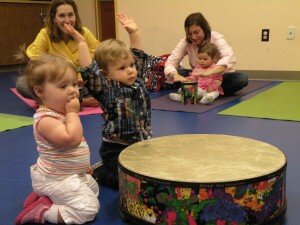Yesterday’s post talked about the importance of bringing volunteering into the classroom, and how service learning can help to show students the importance of service.
It’s important for parents and other adults to get involved in schools by volunteering. Here are ten ways that you can get more involved in schools:
- Join the club. The PTA, home and school club, or school site council are ways for parents to get involved in schools. Being a part of any of these groups will also help to connect you with other parents and community members.
- Attend school board meetings. Attending school board meetings gives you an opportunity to know what direction stendts’ education is taking.
-
 Give a boost to a school club. In the era of disappearing recess and music and arts programs, schools may need help providing these kinds of classes. If your child is involved with any clubs or activities at school, call the person in charge of the group and see if you can help with transportation, supplies, or planning.
Give a boost to a school club. In the era of disappearing recess and music and arts programs, schools may need help providing these kinds of classes. If your child is involved with any clubs or activities at school, call the person in charge of the group and see if you can help with transportation, supplies, or planning. - Get technical. If you have strong computer skills, such as Web site creation or network administration, see if your school needs help setting up a computer system or maintaining or upgrading the equipment they already have.
- Share your time and talents. Teachers often need parent volunteers to help with small-group activities, reading to children, or correcting papers. Are you a fabulous chef or a craft whiz? Volunteer to give students a classroom demonstration of how to make tasty snack or a special holiday gift.
- Organize a workplace tour. Do you work for a company that would be an interesting place for a field trip? Suggest a class visit to your office. Make sure that the tour is age appropriate, and that the students will be safe during their visit.
-
 Start a cleanup crew. Are crushed soda cans and scrap paper taking over the school grounds? Why not plan a school cleanup day? Include parents, students, teachers, and any community members who want to help. Participants will feel a sense of ownership and will be less likely to ignore litter in the future.
Start a cleanup crew. Are crushed soda cans and scrap paper taking over the school grounds? Why not plan a school cleanup day? Include parents, students, teachers, and any community members who want to help. Participants will feel a sense of ownership and will be less likely to ignore litter in the future. - Nurture your green thumb. Have you noticed that the school grounds could use some work? Talk to the principal or PTA about gathering a group of parents to plant trees or flowers in a few spots around the school. Maybe even plan a garden that can help to supply fresh fruits and veggies for students!
- Be in the driver’s seat. Teachers often need parents to drive or chaperon on school field trips. Plus, you get to go on a field trip!
- Volunteer at the school library. A lot of schools are short on funds and look to parents to help keep the library open for students. Offer to check out or shelve books, assist students, or donate money to buy books for the library.
Related articles
- 5 Tips for Volunteering in Schools
- 5 More Tips for Volunteering in Schools
- 9 Questions About Volunteering in Schools

 Yesterday we offered some tips for volunteering with schools. Today, we offer up some more tips for getting volunteer projects off of the ground. Have you ever planned a volunteer project in a school? Do you have any tips to share? Let us know in the comments!
Yesterday we offered some tips for volunteering with schools. Today, we offer up some more tips for getting volunteer projects off of the ground. Have you ever planned a volunteer project in a school? Do you have any tips to share? Let us know in the comments!

 Are you looking to volunteer at your local school, but don’t know where to get started? You can follow these steps to find a volunteer role that suits you. Use them to determine how to make an impact, measure your success, and continue to grow and learn.
Are you looking to volunteer at your local school, but don’t know where to get started? You can follow these steps to find a volunteer role that suits you. Use them to determine how to make an impact, measure your success, and continue to grow and learn. This week NBC is hosted
This week NBC is hosted  Creating a community garden is a great way to teach children important principles of math and science, while at the same time sharing lessons about the environment and health.
Creating a community garden is a great way to teach children important principles of math and science, while at the same time sharing lessons about the environment and health.








 Also, did you know that October 23rd is Make A Difference Day,the largest, annual day of service?
Also, did you know that October 23rd is Make A Difference Day,the largest, annual day of service?
